Prepare your motorhome for winter: A beginner's guide
When summer becomes a distant memory, we need to start thinking about preparing our motorhomes and campervans for cold weather and the problems it brings with it, advises Barry Norris...
How to store your motorhome during winter
How to prepare your motorhome for winter camping
Driving your motorhome in cold weather
Eight essential products for winterising your motorhome
Buying Your Perfect Motorhome, the 2024 edition is available now, including everything you need to know about your first motorhome, with essential guides, top tips and buying advice available to buy here
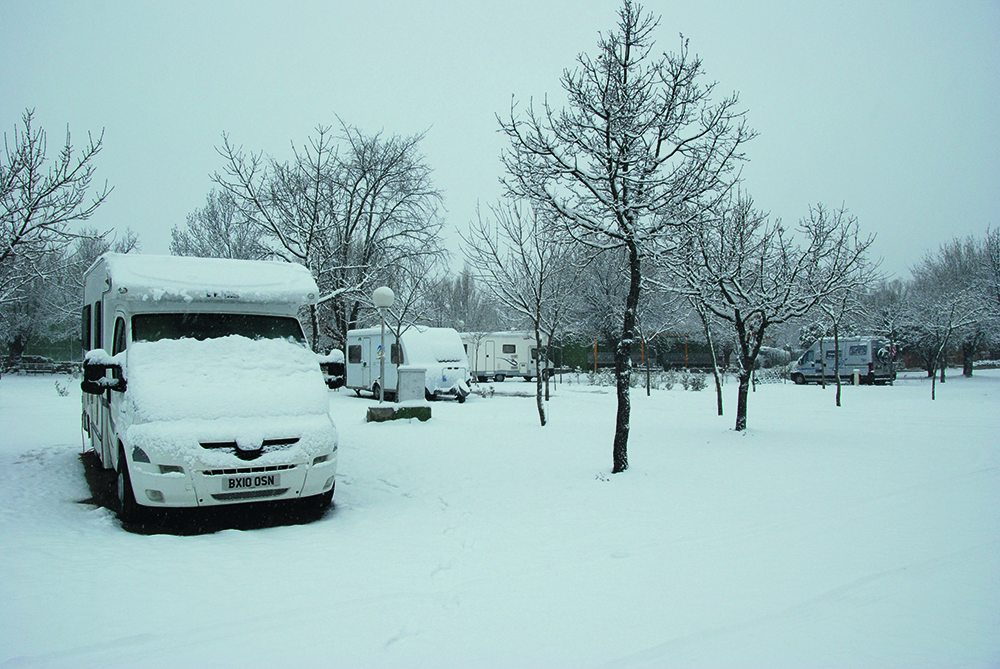
How you winterise your motorhome or campervan will depend on the level of preparation built in by the manufacturer, how you use your motorhome and your destinations – UK, sunny Spain or skiing in the Alps.
An indication of cold weather preparation is the insulation standard contained in BS EN 1646-1. Up until about 10 years ago most UK coachbuilts met Grade 2 of the standard, but now most tend to be Grade 3. Many panel van conversions from the smaller companies do not quote an insulation standard. Don’t think that having a Grade 3 ’van guarantees you’re ready for winter weather.
In essence, Grade 3 means the ’van is insulated and heated so an internal temperature of 20°C can be sustained with external temperatures as low as -15°C. Grade 2 standard indicates the same internal temperature can be sustained at an external temperature of 0°C. Grade 3 testing does require fresh water to be filled towards the end of the testing period and for the water services to operate, but can often only be achieved with an optional winter pack, which includes a fresh water tank heater.
How to store your motorhome during winter
If you continue to camp in winter, there will still be periods between trips when the motorhome is stored. So, if you are not heating the ’van, the first essential is to drain all water from the system. Draining down is good practice after each trip whatever the season to avoid stale water. In winter there’s the added danger of frost damage to taps, shower heads and pumps and a substantial hit to the pocket, especially if your Combi boiler is affected.
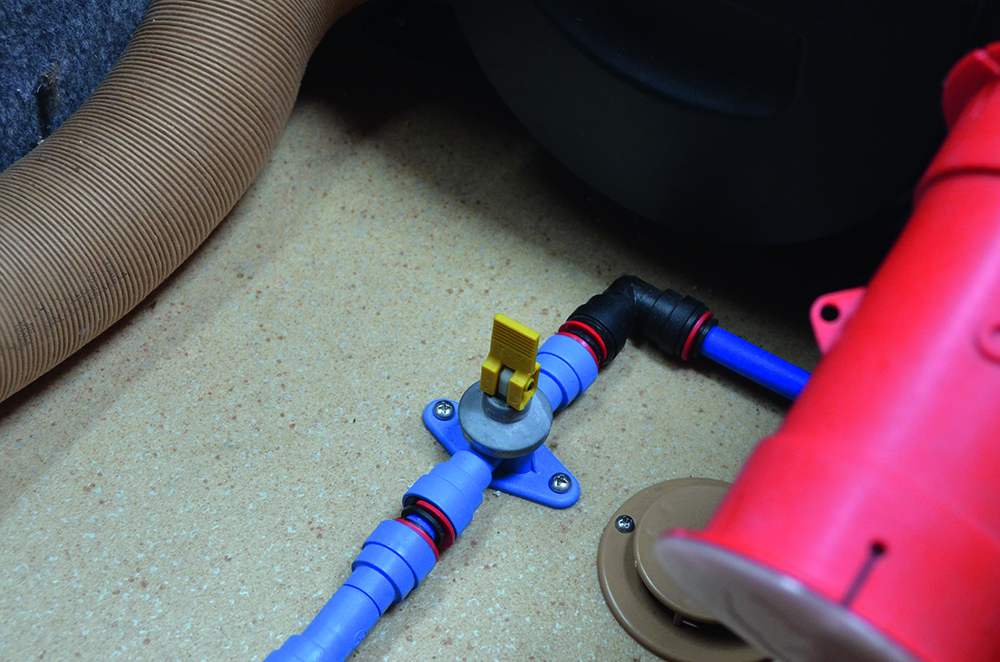
Recommendations for motorhome care in storage:
- Clean the inside and remove any food that may attract vermin
- Ensure the fridge door is propped open to prevent mould forming
- Protect upholstery by covering with an old cotton sheet to keep off dust, which, when damp, can become engrained in the fabric. You can use a dehumidifier, but absorbing crystals and electrical types both have a limited effect and need regular maintenance
- Encourage air circulation throughout the motorhome by opening base locker doors where there are drop-out vents
- Spray or wipe silicone oil onto locker hinges to prevent rusting (Thetford’s seal lubricant is ideal as it’s safe with plastic)
- Use tank cleaner to remove any build-up of limescale and odours in your toilet cassette. Spray the lip seal with Thetford’s seal lubricant to keep the rubber supple and prevent it sticking over winter. Leave the valve open
- Fit winter covers to your fridge vents – these are also essential for winter touring
- Chock the wheels, leave the engine in gear and the handbrake off to prevent brakes binding on
- Fill the fuel tank to avoid a cavity in which condensation can form
- Increase your normal tyre pressure by 0.2 bar and move the motorhome from time to time to help prevent flat spots developing
- Eliminate any unnecessary drains on your vehicle and leisure batteries. A generously sized solar panel will help maintain the batteries but small solar panels marketed as battery trickle chargers are ineffective during winter months
- Consider protecting the external bodywork from a build-up of mould, algae and other environmental damage. Breathable covers are worth considering or use Fenwick’s Overwintering fluid, which provides a protective waxy coating
- Take the motorhome out for a lengthy run from time to time. This will air the motorhome, help charge the batteries and prevent mechanical components from seizing up.
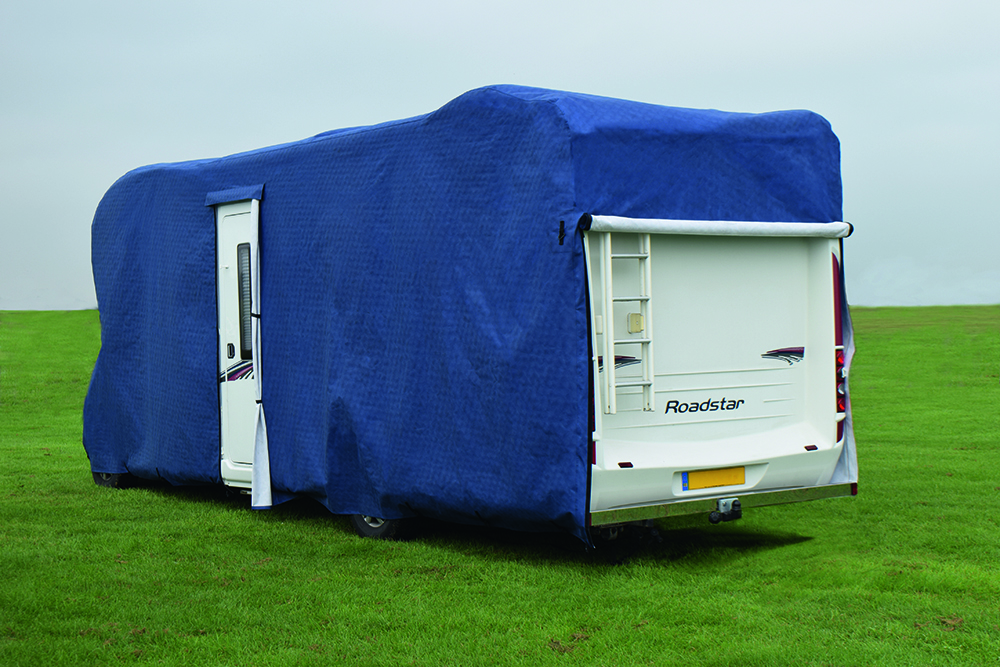
How to prepare your motorhome for winter camping
Keeping water flowing in your motorhome
When sub-zero temperatures occur it’s essential to keep water flowing – fresh water in and waste water out. A few coachbuilts have a double floor providing a shallow, heated cavity below the main floor holding the water systems. Coming a close second is an on-board fresh water tank, which will benefit by accessing heat from the living accommodation.
Many motorhomes have an external underslung fresh water tank. You need to insulate the tank but only when a tank heater is also installed. Insulation on its own will simply delay the time it takes for the tank contents to freeze and, once the tank contents are frozen, they will remain frozen for much longer than without insulation.
Retro-fitting a tank heater is now much easier with the availability of electrically heated mats fitted externally to the tank, avoiding the need to drill into the tank to install an internal heating element. Note that a typical 12V tank heater is likely to consume 2.5A to 5A. How long this current draw operates will depend on tank size and insulation, the heating element installed, ambient temperature and operating parameters of the thermostat (if fitted). In very cold weather, the use of these heaters is unlikely to be sustainable over long periods off grid.
It’s not only your water tank that’s vulnerable, it’s any external pipes feeding your on-board system. A good system will see the offtake for fresh water come directly above the tank into the accommodation area and then be distributed internally. If you have exposed pipe runs, there are 12V pipe heaters, which, combined with insulation, will be very effective in keeping them running.
Maintaining a fresh water supply is all fine and good, but if your waste tank is frozen, you have no outlet for your waste water, short of manually bailing out from the sink. Again, insulation combined with a tank and pipe heater is the answer, as long as the drain valve is not forgotten. One solution is to cover the drain valve with a temporary hat, perhaps made from a bubble wrap postage bag in a waterproof food bag.
For an average UK winter, it’s possible to survive cold nights by emptying the waste tank and leaving the drain-down valve open with a bucket to collect overnight waste. As with the fresh water, external pipes taking waste to the tank can be vulnerable. Check for dips in the pipework or water traps designed to prevent smells where water will linger. If this is the situation, emptying a saline solution down the sink last thing at night will be worthwhile. Cassette toilets rarely cause problems for UK winters, but it’s worth ensuring the washroom is getting its fair share of heat to keep things above freezing.
Keeping warm in your motorhome in winter
Some motorhome manufacturers offer an upgrade in heating capacity but, if not, you can supplement heating capacity with a small electrical heater. However, you may wish to camp off grid and need to rely on your gas supply or, in some cases, diesel. It’s worth remembering, when it comes to fuel, heating appliances are greedy. For extended stays in extremely cold weather, it’s best to have a dual-fuel heater and go for a hook-up, using gas or diesel to supplement your energy supplies as necessary.
When out for the day, it’s best to keep the heating on with the thermostat around 10˚C. If you have a separate water heater keep this on or at least open up the locker door where it is located to ensure the temperature is kept up. Whale’s underfloor water heater has a frost-protection setting. If you have a Truma FrostControl drain-down valve fitted, extra care needs to be taken to ensure the temperature around the valve is kept above the 3˚C at which it automatically opens and dumps your water.
Improving your comfort level in your motorhome this winter
All motorhomes can have comfort levels improved for cold weather, but never compromise on minimum ventilation levels:
- A good-quality windscreen cover is essential. Opt for an external cover to prevent condensation on the inside of the windscreen, which can be severe when cooking and washing activity is going on inside
- Consider internal insulation mats (bubble wrap could be a cheaper alternative) for rooflights and wrap-around insulation for pop-tops
- Insulate wheelarches – it’s common to find Grade 2 motorhomes with thin plastic wheelarches separating the inside from the wheel
- Carpet the floor and lay carpet underlay in the large bed lockers to improve floor insulation
- Never block vents – these are in place for safety reasons such as floor vents by gas appliances and venting around rooflights, so open a rooflight or window when cooking to reduce condensation
- Never boost your heating by using your gas hob and/or oven as they use up oxygen and create a small amount of carbon monoxide. Never bring a charcoal barbecue into your motorhome or awning while still warm
- Condensation under mattresses can be a problem if the bed locker is cold. Other than heating and ventilating the locker, try a ventilation mesh layer (from boat chandlers) under the mattress If you are planning to tour in winter it’s worth considering buying a motorhome with central heating using a wet heat transfer system. These systems, like Alde’s, tend to provide a more even distribution of heat and help to eliminate cold spots. Though you do not have to drain the system in winter storage, refer to the manufacturer instructions for periodic fluid replacement. This type of heating system, like most others, relies on electrical power to function. So, when off grid, it is essential you monitor your leisure battery’s health.
Using ottled gas, bulk tanks and diesel in your motorhome
Only propane gas cylinders should be used in winter; butane ceases to gas off as the temperature approaches freezing. Propane continues to gas off until -40°C. If you have refillable cylinders or a tank, filling with Autogas will be fine. Autogas is a mixture of propane and butane with UK Autogas being mainly propane, thus suitable for winter use.
Gas space heaters and hot water boilers in a modern motorhome have external air intakes and waste gas vents. These intakes and exhausts should be checked to ensure they do not become blocked by drifting snow.
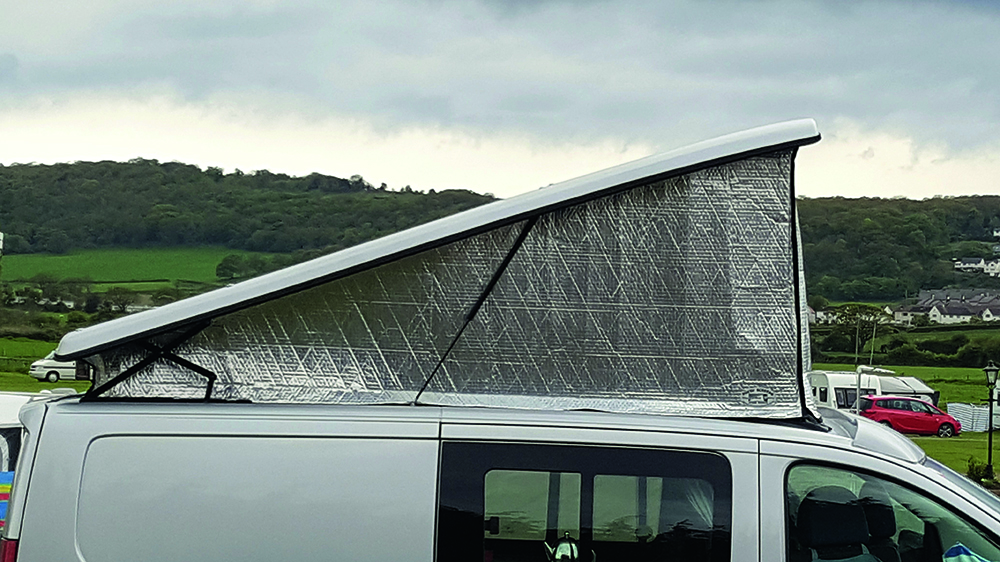
Driving your motorhome in cold weather
Don’t forget to top up your windscreen wash to allow for freezing temperatures and ensure your last vehicle service included a check on the radiator anti-freeze content.
Motoring organisations advise replacing normal summer tyres with winter tyres. Winter tyres provide better grip in all conditions, not just snow and ice when it gets below 7°C. For most, this is expensive, as well as needing somewhere to store our summer tyres. A compromise is to fit four-season tyres, providing higher grip in warmer months than winter tyres and better grip in summer than winter tyres. They don’t offer the same performance as summer or winter tyres in the seasons they are specifically designed for.
Winter tyres are mandatory in some countries, either as a national requirement during specified periods or just when roads are covered with snow and ice, while the regulations may also only apply to specific regions. These may be just recommendations, like Switzerland (except for alpine pass roads) but, if you’re involved in a crash, there are likely to be liability issues if you were using summer tyres.
Several countries are happy to accept the use of tyres marked with M+S, generally found on all-season tyres. Germany accepted these as winter tyres until recently when it required winter tyres as defined by the snowflake on three-peaks symbol on the sidewall. M+S tyres made before January 2018 can be used in lieu of winter tyres until 30 September 2024. Country requirements differ between vehicles under 3.5 tonnes, where usually all wheels have to be fitted with winter tyres, and vehicles over 3.5 tonnes, which may only need the driven axle to have them fitted.
In some countries, snow chains must be carried and used as required by local conditions. Reduced speed limits will apply when snow chains are fitted and this should be when the road is fully covered by snow or ice. Also available are snow socks; they’re not an alternative to chains but a low-cost and easy-fit solution to help get you out of trouble on soft snow. Socks have to be removed when you reach a clear road surface, otherwise they will be shredded.
A few countries stipulate a minimum tyre depth of 3mm, 4mm or even 5mm in winter rather than the European and UK normal minimum of 1.6mm. Tyre experts recommend we change our tyres well before the 1.6mm because of the significant increase in braking distance in wet weather as depths approach 1.6mm. Their recommended minimum tread depth is 3mm for summer tyres and 4mm for winter tyres.
Each country has different requirements; for further details refer to the AA and individual country tourist websites or the Caravan and Motorhome Club’s publication 'Touring Europe'. Tyre company, Continental, has a good definitive guide of European regulations for winter 2017/2018 on its website, so look out for updates.
Get MMM for just £29.99 a month!

MMM is Britain’s best-selling motorhome magazine and it has been for over 55 years. Each four-weekly issue is packed with the best motorhome travel features, genuine reader reviews of campsites, in-depth motorhome reviews, plus the latest technical advice, buying tips and much more.
MMM’s fully searchable digital library gives you access to the latest issues, plus every edition of MMM since January 2012.
Eight essential products for winterising your motorhome
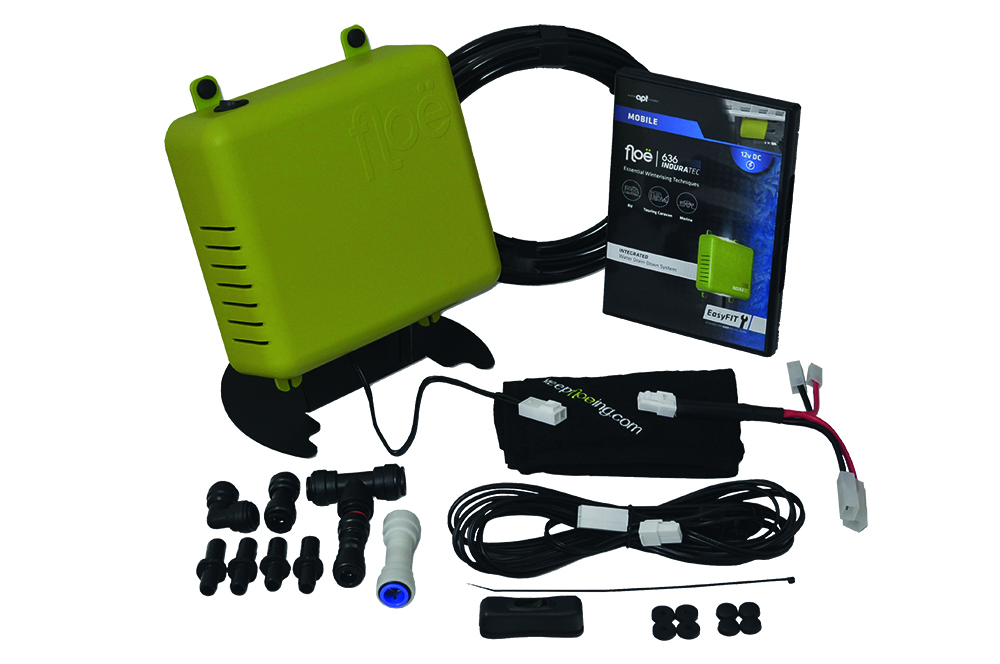 FLÖE INDURATEC 636
FLÖE INDURATEC 636
Removing all the fresh water from your motorhome’s system when laying it up for the winter is vital. APT Innovations has already seen success with its Flöe manual drain-down system and the Induratec 636 is the latest product from the company. Whereas the manual system is portable, this one is permanently plumbed in and works automatically. Cleverly, it uses a built-in air compressor to make sure your motorhome’s plumbing system is fully purged of water. Price: £195.
Contact: keepfloeing.com
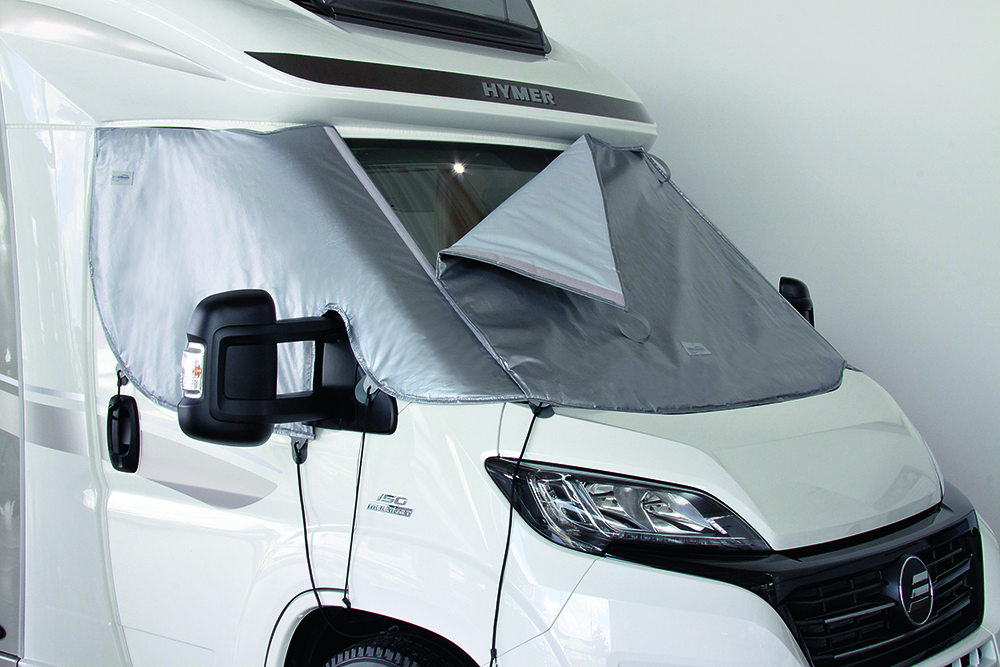 HINDERMANN THERMO LUX SCREENS
HINDERMANN THERMO LUX SCREENS
These cab screens are designed to help insulate interiors in extreme cold. However, they can also be used to keep things cool in hot weather, especially with A-class motorhomes’ large windscreens, which can direct a lot of heat inside. The screen is supplied in two parts, the first covers the cab windows, while the second the bonnet and front wings, extending down to the ground. There is no need to remove them during the day; a Velcro panel can be opened to let light through the windscreen. Price: from £255.
Contact: vancomfort.co.uk
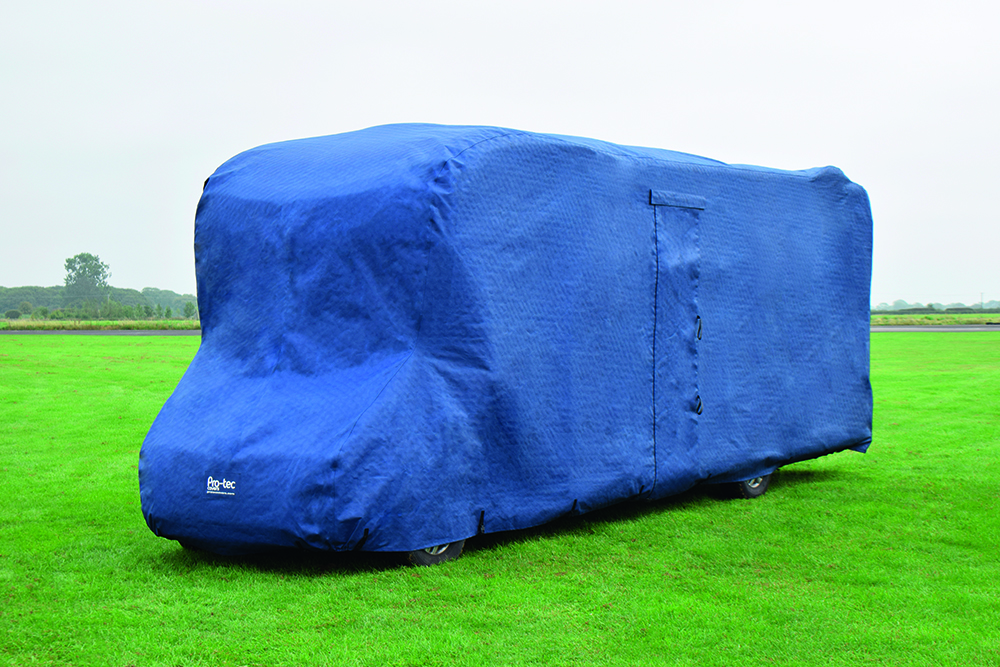 PRO-TEC COVERS
PRO-TEC COVERS
A good-quality cover should protect your motorhome from the elements, while being breathable to stop the build-up of condensation or mould inside. And that’s exactly what Pro-Tec covers do. The fabric has an outer waterproof membrane, a breathable layer and a soft lining to help prevent damage to coachwork. Pro-Tec claims its covers are the most breathable on the market. Each cover can cater for aerials, top boxes and solar panels. The easy-fit system should make dressing your ’van for hibernation simple. Price: from £329.
Contact: pro-teccovers.co.uk
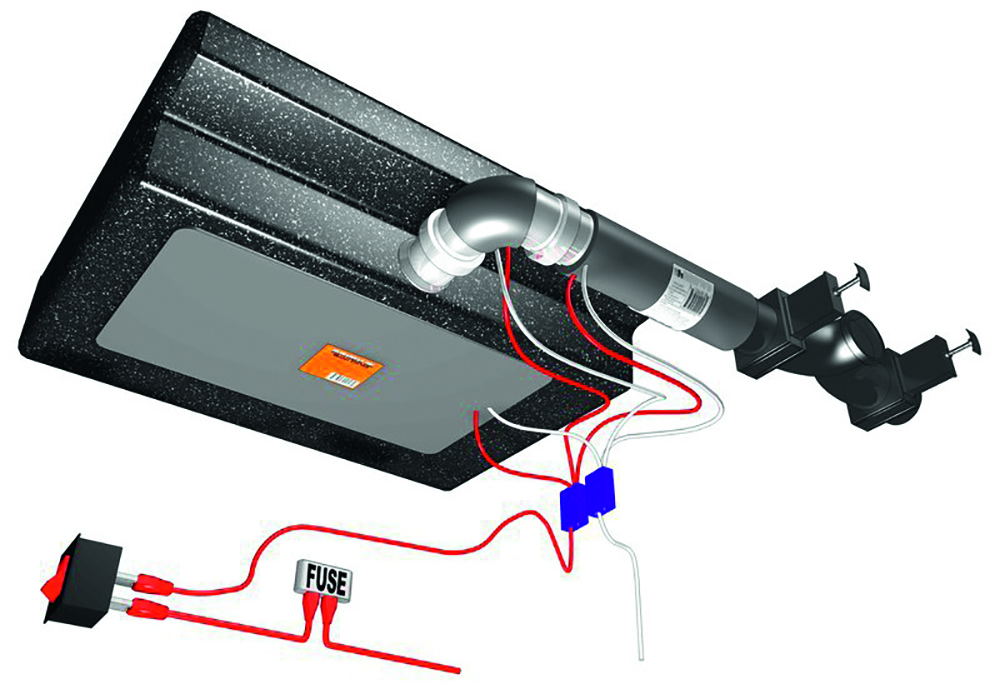 TANKBLANKET
TANKBLANKET
A bit of a strange name for this product as TankBlanket is a heater that uses 12 volts to power an electric element that keeps water tank contents from freezing. However, where many are inserted inside the tank, TankBlanket is attached to the bottom via a self-adhesive backing. It also comes with a built-in thermostat so simply turn on and forget when the temperature starts to drop. The unit cycles on and off as needed. TankBlanket works at maximum efficiency when used in conjunction with insulation. Price: from £91.
Contact: tankblanket.co.uk
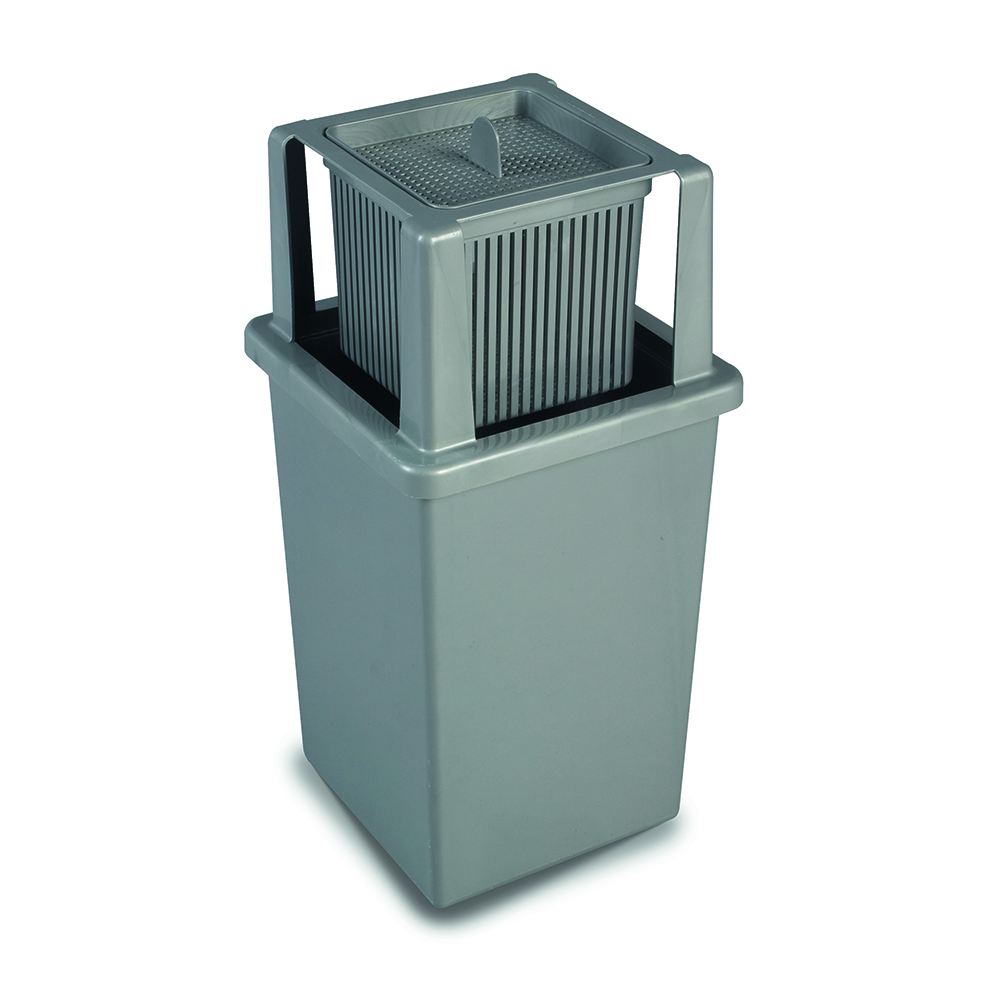 KAMPA DAMP BUSTER
KAMPA DAMP BUSTER
This easy-to-use unit is put inside your motorhome where it absorbs moisture from the air, thus cutting down condensation. The Damp Buster uses moisture-absorbent granules held in a container. Unlike others, Damp Buster has a large capacity. It’s a substantial 360mm high and has a tank capacity of five litres.
Around a coffee mug-full of the granules is placed in the cage. These absorb moisture and dissolve, ending as brine in the tank below. Each fill of granules can last up to three months. Price: £12.99.
Contact: kampa.co.uk
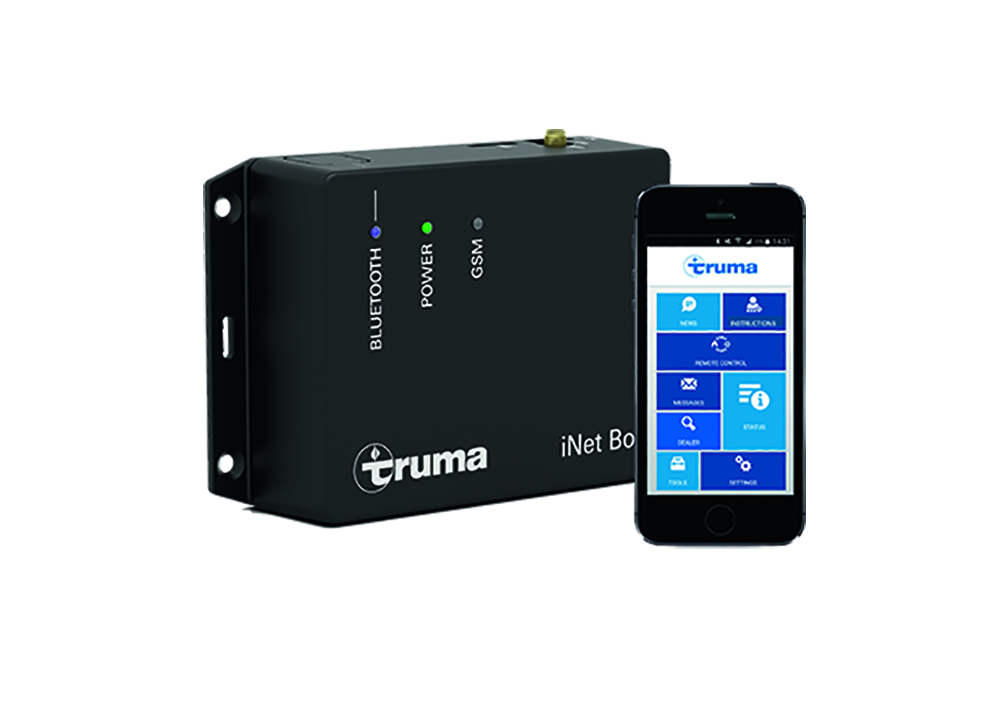 TRUMA iNET
TRUMA iNET
If your motorhome is fitted with a Truma heater (most are), you may be able to use some of the latest technology. An upgrade to the iNET system will allow you to control your motorhome heating system from anywhere through a smartphone app and the data-only sim card installed in the iNET box, making it possible to turn your heating on and off remotely. And, when you’re on board, you’ll not have to get out of bed in order to turn the heating on as the system works using Bluetooth in or near your motorhome. Price: £295.
Contact: truma.com
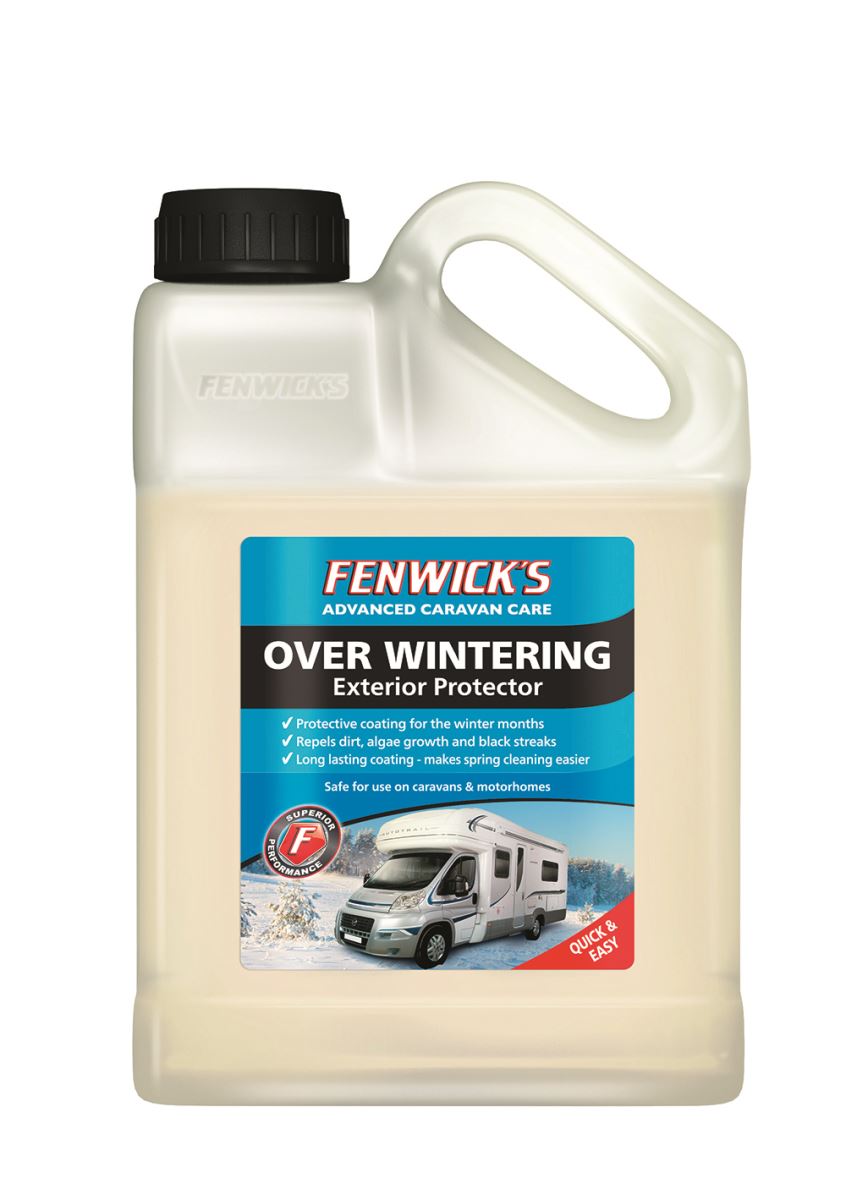 FENWICK’S OVERWINTERING EXTERIOR PROTECTOR
FENWICK’S OVERWINTERING EXTERIOR PROTECTOR
This fluid is designed to protect the exterior of your motorhome from dirt and mildew build-up when it’s laid up for the winter. Starting with clean body, the fluid is mixed at a predetermined dilution and applied, preferably with a spray.
Once dry it will protect the motorhome. However, if the weather has been particularly bad it may need reapplying at some point. It’s a great alternative to the bulk and awkwardness of storing and fitting a fabric cover. Price: £11.99.
Contact: fenwicks.info
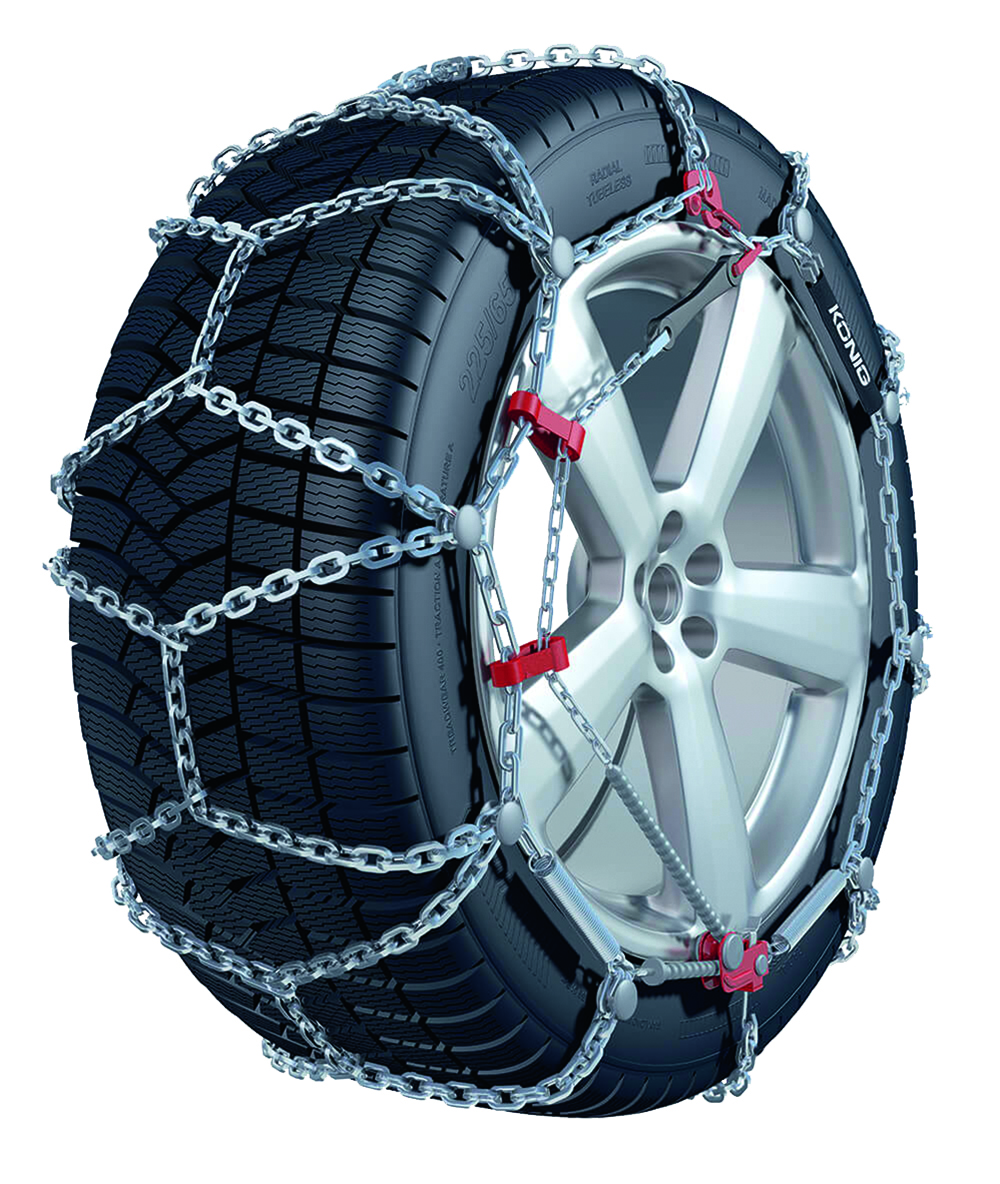 KÖNIG XD-16 SNOW CHAINS
KÖNIG XD-16 SNOW CHAINS
With dozens of types out there, choosing snow chains can be difficult. König is a top-quality make that’s part of the respected Thule brand. The XD-16 is easy to fit.
You may think you’ll never need them, but snow chains are a legal requirement in some countries in winter. And you’ll be glad you’ve got a set if you get into trouble on snow or ice-covered roads. Fitting is simply a matter of draping them over the wheel, joining and tensioning with clips. Driving forwards slowly aligns the chains and you’re away. Price: around £125.
Contact: konigchain.com
For more practical and technical advice about motorhomes, click here.
Expert motorhome advice to your door!
Why not subscribe to one of our fabulous magazines and get expert advice, travel ideas, technical help and all the latest news for your motorhome and your motorhome adventures!

Want to know more about MMM magazine?
Every month MMM has articles written by motorhomers who have been there and done it, from great UK and European (and further afield) tours, campsite reviews, owners' reports and DIY projects among other things.
MMM's tests, reviews and expert buying guides are not to be missed. MMM's technical advice is a must and includes everything from weekend jobs to longer-term DIY projects. And much more!
About MMM magazine
Want to know more about What Motorhome magazine?
Every issue of What Motorhome magazine provides essential buying advice for anyone looking to buy a new motorhome or campervan or upgrade their existing model. With a pedigree of over 30 years of offering the best motorhome and campervan buying advice, every issue of What Motorhome includes more new motorhome and campervan reviews than you will find in any other magazine.
About What Motorhome
Want to know more about Campervan magazine?
Campervan is the exciting monthly magazine that will give you all the inspiration you need to explore the world in your campervan. Every issue is packed with real-life campervanning experiences, inspiring travel ideas in the UK and further afield, the best campsites to stay on, campervan road tests and reviews of the latest models, and much more!
About Campervan magazine





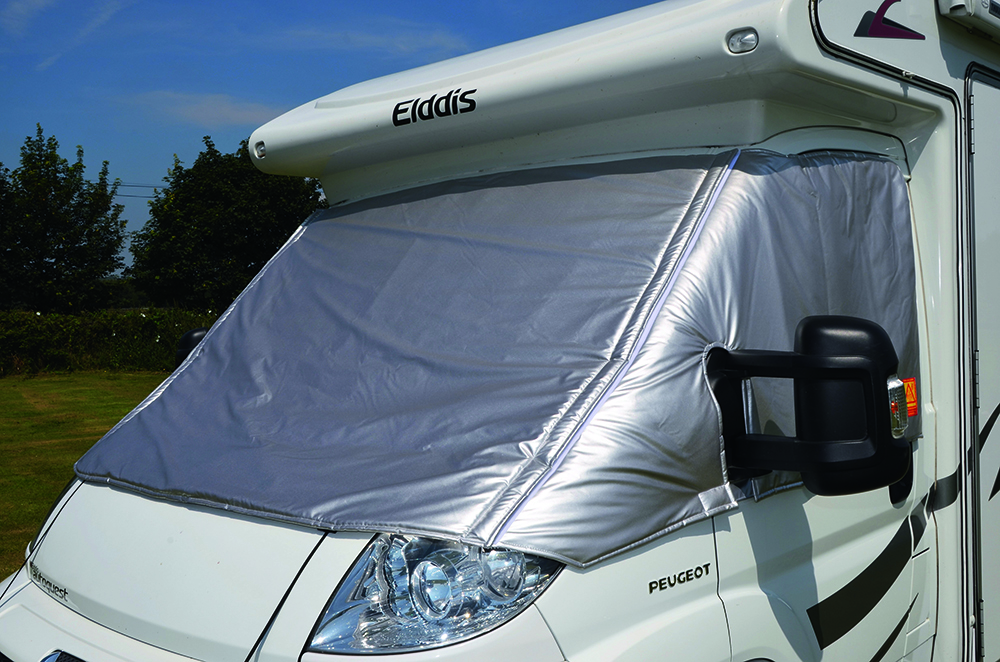


Recent Updates
Engine management lights: all you need to know
What is the engine management light? What does it mean, and what do I have to do? ...
Motorhome air suspension: all you need to know
Motorhomes are heavy and the additional weight of equipment and height of the bodywork can increase the loads ...
Motorhome WiFi: how to get better motorhome internet
Staying connected on the move is more and more essential, so relying on campsite WiFi isn't an option – here ...
A class of their own - our guide to A-class motorhomes
Thinking of trading up to an A-class, or even going straight to the top of the motorhome tree? We guide you ...
Explore overseas on a motorhome dream tour
Enjoy exotic travel in a campervan or motorhome by hiring, swapping with someone else or exporting your ...
Motorhome water systems: everything you need to know
On-board water is an important part of every motorhome – here’s everything you need to know ...
Campervanning in Europe: what you need to know
Whether you're planning a leisurely drive through the French countryside, navigating bustling city streets in ...
Campervan security: all you need to know
With thefts on the increase, it’s important to know how to keep your campervan secure and prevent campervan ...
Campervan furniture: everything you need to know
Our campervan experts guide you through all the essentials for your campervan, including tables, chairs, ...
Campervan finance: how to fund your purchase
Here we look at the different types of campervan finance available, to help you decide what’s the best option ...
Other Articles
Britain’s best used motorhomes
Want a great motorhome without paying the premium for a new one? Here's a guide to the best you can get in the pre-owned market for each layout, ...
Which motorhome? Choosing the perfect motorhome for you
Choosing a motorhome or campervan is one of the biggest buying decisions you’ll ever make, so it's important ...
Campervan washroom essentials: stay fresh on the road
Our guide will take you through the campervan washroom essentials you'll need so you're well-prepared for ...
Dogs in campervans: all you need to know
Follow our advice and your dog will enjoy campervanning as much as you do ...
Electric campervans: all you need to know
Our guide will take you through everything you need to know about electric campervans and what the future ...
Motorhome electrics: a complete guide to your motorhome electrical set-up
Motorhome electrics can dramatically enhance the convenience and comfort of your vehicle – but they can be ...
Lighting for campervans: all you need to know
We guide you through all the lighting options available for you and your campervan, including interior ...
Electric bikes for motorhomes: our ultimate guide
Read our comprehensive guide to electric bikes for motorhome owners, helping you add electric power to your ...
Our guide to 'cheap' motorhomes in 2024
If you're on the hunt for an affordable new motorhome, this is the best place to start – we've rounded up a ...
Campervans in winter: all you need to know
Here's your guide to preparing your campervan for the colder months, whether you will be using it or putting ...